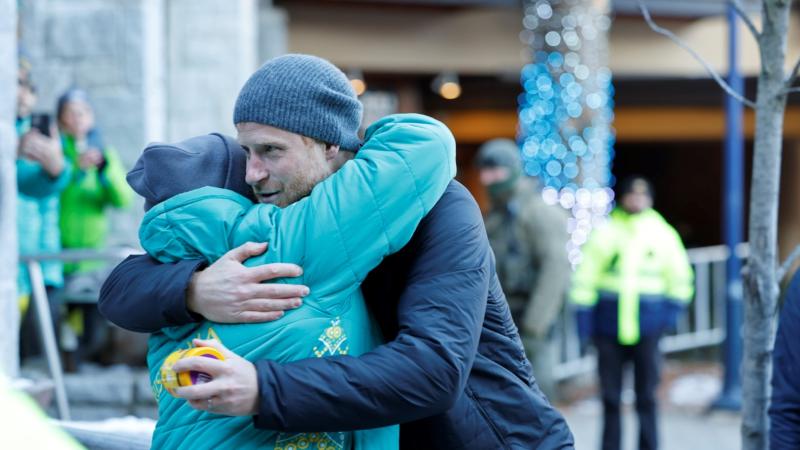When Married at First Sight Australia bride Lauren Hall said her main goal was to “serve” her man , the reality show contestant was reflecting a growing trend in western culture – the so-called tradwife lifestyle.
Author
- Christina Vogels
Senior Lecturer, School of Communication Studies, Auckland University of Technology
Tradwives are women who choose to take up traditional gendered roles within the home, centred around serving their husband and children. This version of wifehood is underpinned by a deference to one’s husband.
Because of this, tradwives tend to be financially dependent on their husbands and many also give over decision-making rights to their husbands. In essence, the tradwife lifestyle rejects the past seven decades of feminism.
But why is being a tradwife growing in popularity in 2025, and how has it become so marketable?
The rise (or return) of tradwives
Social media is partly to blame. The tradwife trend has risen in visibility across platforms such as Instagram and TikTok.
Influencer Hannah Neeleman from Ballerina Farm is one of the most prolific tradwife influencers, topping ten-million followers on her Instagram page.
Other Instagram accounts such as Ekaterina Anderson and Aria Lewis are popular in their own right, with followers ranging from 100,000 to 200,000.
All promote a joy of domesticity. They post about their daily tasks of baking, preparing meals, raising children and, for many, connecting to the land and living sustainably.
However, underneath this joy of domesticity is often an advocation of subservience. Many tradwives openly promote the daily pleasure they get from serving their husbands, who they argue are the “natural” head of the household.
Marketing a romanticised lifestyle
Why, then, is this version of femininity so desirable?
For one, tradwives market a romanticised lifestyle. Theirs is reminiscent of the 1950s: a golden age economically, where employment was high, consumables were affordable and the male breadwinner was supported at home by a subservient wife.
The tradwife lifestyle also promotes a pioneering domesticity. Tradwife influencers often post about baking their own bread, make their own preserves and mending their family’s clothes.
Many also wear pioneering-type clothing – blouses and long skirts with the signature tradwife apron. A number of tradwives such as Aria Lewis also have their own clothing and merchandise lines for their followers to buy.
People’s need for ” ontological security ” (security of the self) – a term coined in 1984 by sociologist Anthony Giddens – is another reason why the tradwife lifestyle is followed by so many women today.
Broadly speaking, ontological security denotes a desire for a stable identity. Academics Catarina Kinnvall and Jennifer Mitzen offer this explanation :
As the world is becoming more fragile, contentious, and conflictual, we are, Giddens argues, prone to seek a sense of security, a “protective cocoon”, in established norms and routines and in beliefs about particular narratives of home and secure pasts.
The tradwife identity offers women this security: a stable, strictly defined and seemingly uncomplicated identity that is predicated solely on serving one’s husband and children. The nostalgia for the 1950s and the pioneering “return to basics” life feeds this sense of security.
A double entanglement
It also seems women are desiring the tradwife lifestyle due to the damaging effects of “double entanglement”.
Society constantly tells women they can ” have it all “: sexual freedom, any career they desire and an ability to choose whether or not to become mothers.
In reality, however, this is an empty promise. Sexually assertive women, women who appear overly dominant in the workplace, and women who choose not to mother are often heavily shamed in society .
Herein lies the double-entanglement. Women are told they can choose how to live their lives but are then shamed for choosing ways of living that are actually seen as unfeminine.
It is possible the tradwife identity offers women a version of femininity that provides safe haven from being shamed as “pariahs” in society .
Sadly, though, there is no safe haven. When you strip away the romanticism of domesticity, the tradwife lifestyle only furthers the difficulties women face today by breeding a deep misogyny that is based on an intense subjugation of women.
The new female right
This misogyny is further entrenched by many tradwives’ association with the far-right women’s movement, which is gaining popularity within the United States.
The BBC’s America’s New Female Right documentary explores the rise of this movement and how it further feeds into narratives that femininity ought to be based on submission to men.
It seems this version of womanhood will only gain momentum as the world veers even farther to the far right. The uncertainty of today – with frequent economic crises, climate emergencies and other crises of humanity – will only fuel the need for a nostalgic, seemingly simpler life.
On the surface, this is what many feel a traditional return to womanhood offers. But the costs of giving up the gains of feminism are not clear.
![]()






